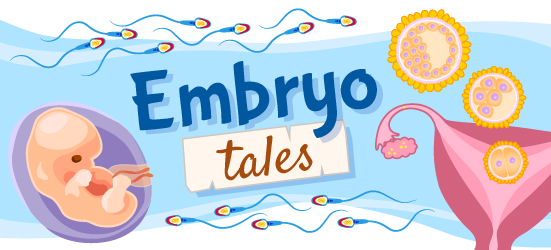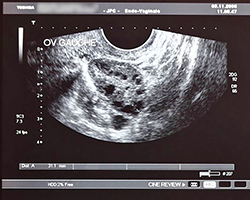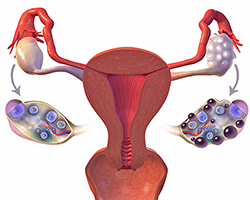
The Mysterious Case of the Missing Periods
Illustrated by: Sabine Deviche
show/hide words to know

Everyone in a doctor’s office works together to care for patients. Similarly, different body parts work together to take care of the body as a whole. The ovaries, brain, and uterus work together so a person can have periods. Image by Direct Media via Stock Snap.
You’re a doctor in one of the busiest health clinics in your city. At the clinic, different people work together to give patients the best possible care. A receptionist sits at a desk in the waiting room and checks in patients for their appointments. Then, a nurse calls each patient to the examination room, checking their weight, height, heart rate, and blood pressure. You examine each patient and, combined with the nurse’s notes, you use that information to diagnose them. Each person helps the health clinic run smoothly.
Like workers in a busy health clinic, different parts of the body also work together to complete tasks. For example, there are hormones in the stomach and small intestine that help you digest food. And the brain, the ovaries, and the uterus work together to prepare the female body for periods. Periods happen during the menstrual cycle, which makes pregnancy possible.
There are several parts of the body that must work together during the menstrual cycle. And if there is an interruption in the cycle, then there may be abnormalities. In the Embryo Project article “Symptoms Associated with Polycystic Ovarian Syndrome (PCOS),” writers explore the many ways PCOS can affect a person’s body.
Analyzing Androgens

Exercise is a healthy hobby to have. But too much strenuous exercise that leads to sharp drops in body mass might cause a person to experience abnormal periods. Image by AndiP via Pixabay.
At the health clinic, a nurse tells you that a patient, Penelope, has not had her period for nearly six months. There are many different reasons why Penelope might not have her period. So, you head toward the examination room to investigate further. Irregular periods can happen as a result of stress, eating habits, or too much exercise. That is because those things may cause your body’s hormones to become imbalanced. Pregnancy and breastfeeding can also stop periods because they change your body’s hormones.
You ask Penelope about her daily life. She tells you that she isn’t stressed out, she is eating and exercising regularly (but not too much), and she is not pregnant. She seems very healthy. What could be the cause of her missing periods?

A person with PCOS has higher levels of androgens than they typically would. That might cause acne, among other symptoms. Image by Sharon McCutcheon via Pixabay.
You remember that in some cases of missing periods, a woman can have more androgens in her blood than usual. Androgens, which are hormones that are more commonly found in the male body than the female body, may be the cause of Penelope’s missing periods. An increased amount of androgens make it hard for periods to happen. Androgens may also cause some women to experience acne and excess hair growth.
So, you decide to take a blood test to check Penelope’s hormones. You test for androgens, as well as insulin. In some cases of polycystic ovarian syndrome (PCOS), the body may not be able to make enough insulin. Insulin is a hormone that helps your cells absorb sugars to get energy. Without enough of it, women may develop type II diabetes. People with that condition often have higher blood sugar that might damage their body’s systems. So, it is important to make sure that Penelope’s insulin levels are normal.
Observing the Ovaries

Blood tests can show doctors the level of hormones in a person’s body. That’s why doctors might use blood tests to see if someone has PCOS. Image by Marco Verch via Flickr.
The blood test results come in and show high levels of androgens and insulin. Those findings may mean Penelope has PCOS. But before you can diagnose her, you want to do one more test. You call Penelope and ask her to visit the health clinic again, telling her that you want to do a vaginal ultrasound. During this type of ultrasound, a doctor inserts a thin device, covered in gel, into the vagina. That device creates sounds waves that are translated into images. That allows the doctor to see the patient’s uterus, ovaries, and fallopian tubes.
While you conduct the ultrasound, you notice twelve small black dots on one of Penelope’s ovaries. You immediately recognize those small black dots as cysts, as you’ve seen those before. In fact, ten percent of women in the US have cysts like Penelope.
You are able to tell Penelope that she has PCOS. You'll continue seeing her and may prescribe some medicine for Penelope that could help with her symptoms. But for a long time, scientists didn’t know anything about the condition. That made it difficult to diagnose people who had the same symptoms as Penelope. Let’s take a look at how scientists came up with ways to detect polycystic ovarian syndrome.
Stein-Leventhal Syndrome

Modern doctors can use ultrasounds to look at ovaries. This is what ultrasound images of an ovary look like. A doctor can use those images to find cysts inside the ovaries. Do you see the small black dots? Those are cysts. Image by Anne Mousse via Wikimedia Commons.
In the health clinic, you used a lot of the techniques that doctors developed during the 20th century. In the 1920s, the doctors Irving Freiler Stein and Michael Leventhal treated patients like Penelope. They found that their patients had missing periods and excessive hair growth. But at that time, doctors did not know about polycystic ovarian syndrome. So the doctors decided to call those symptoms Stein-Leventhal Syndrome.
Stein came up with a way to look at the uterus, ovaries, and fallopian tubes inside his patients. He injected carbon dioxide gas and oil into the fallopian tubes of his patients. That allowed him to make an X-ray. The X-ray showed that the patients’ ovaries were enlarged because of cysts.
Then, Stein removed ovarian tissue from his patients during surgery. He later looked at those tissues under a microscope to further investigate. But surprisingly, Stein found that the surgery was helpful to his patients, because it got rid of the cysts. Some of them started to have their periods again.
A Different Diagnostic Tool
Other doctors continued to follow in Stein’s footsteps. That was until 1958, when scientists at Harvard Medical School studied the hormones of women who had cysts. They found that those women also had an unusual amount of the hormone gonadotropin. That hormone helps signal androgens and estrogens. That was one of the first studies that found that women who had cysts also had hormone imbalances. So, doctors started to take urine samples. They measured women's hormone levels in each sample to find out if they had PCOS.

The left side of the image shows a typical ovary, while the right side of the image shows an ovary with cysts. Many people with PCOS have cysts. In fact, around 10% of women in the US have cysts. Image by Bruce Blaus via Wikimedia Commons.
But other scientists said that those urine samples were unreliable. That is because women have changing amounts of gonadotropins over the course of their menstrual cycles. So in the 1980s, doctors began to use ultrasounds to check for PCOS. Ultrasound is less invasive than surgery and more reliable than urine samples. Doctors around the world still use blood or urine tests to see if women have high amounts of androgens. They choose between a blood and urine test based on their patient needs, test price, and what test is available.
Today, doctors can find out if women have PCOS the same way that you did for Penelope. In the US, PCOS affects nearly 10 percent of women. Around the world, even more women experience it. So, it is important that doctors find out if a woman has PCOS as soon as possible. Then, those women can get early treatment, such as oral birth control and other medicine that helps with the symptoms of PCOS, and have a better quality of life.
Toad image by Brian Gratwicke via Wikimedia Commons.
This Embryo Tale was edited by Risa Schnebly and Dina Ziganshina and is based on the following Embryo Project articles:
Darby, Alexis, "Irving Freiler Stein Sr. (1887-1976)." Embryo Project Encyclopedia (2017-07-20). ISSN: 1940-5030 http://embryo.asu.edu/handle/10776/12956.
Darby, Alexis, "Symptoms Associated with Polycystic Ovarian Syndrome (PCOS)." Embryo Project Encyclopedia (2017-12-19). ISSN: 1940-5030 http://embryo.asu.edu/handle/10776/13027.
Raup, Christina, "The Birth Control Pill." Embryo Project Encyclopedia (2010-07-01). ISSN: 1940-5030 http://embryo.asu.edu/handle/10776/1666.
Van Iten, Brendan, "Estrogen and the Menstrual Cycle." Embryo Project Encyclopedia (2016-06-22). ISSN: 1940-5030 http://embryo.asu.edu/handle/10776/11344.
Zhu, Tian, "Clomiphene Citrate." Embryo Project Encyclopedia (2009-07-25). ISSN: 1940-5030 http://embryo.asu.edu/handle/10776/1997.
Zhu, Tian, "In Vitro Fertilization." Embryo Project Encyclopedia (2009-07-22). ISSN: 1940-5030 http://embryo.asu.edu/handle/10776/1665.
View Citation

In the medieval times, people came up with many creative solutions to ease period pain. One belief was that burning a toad and wearing the ashes in a pouch around your waist could help ease cramps and a heavy flow.
Be Part of
Ask A Biologist
By volunteering, or simply sending us feedback on the site. Scientists, teachers, writers, illustrators, and translators are all important to the program. If you are interested in helping with the website we have a Volunteers page to get the process started.






